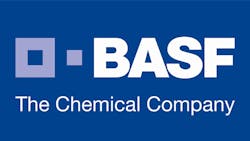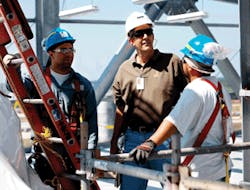"EHS excellence is a fundamental component of business excellence," says Tony Germinario, EHS manager, NE hub. "It is compatible with excellence in other business parameters such as quality, productivity and profitability. They are mutually supportive and must be made an integral part of everything we do."
The journey utilizes employee culture surveys to gauge whether a certain site or business group is in a reactive, dependent, independent or interdependent culture state. It identifies areas of weakness that may require additional focus, and is repeated periodically to track culture improvement progress.
Journey Roadmaps are used to identify areas of focus, specific improvement activities, responsible parties, measurements and status. The program utilizes a pool of trained Journey Travel Agents to guide sites and business groups in effectively implementing the safety journey.
Process Safety
As a chemical company, BASF has a strong focus on process safety. That said, the 2005 disaster at BP's Texas City refinery heightened process safety awareness at BASF.
The Texas City incident "caused us to re-examine our internal practices, processes and management expectations relative to process safety," says Germinario.
Several areas for improvement were identified through the Process Safety Emphasis Program, including clarification and communication of process safety roles/responsibilities from senior leadership to production operators; process safety gap analysis tool for self-assessments; mandatory process safety curriculum; process safety key performance indicators; and an annual process safety management review.
BASF also has a capital project review process that requires capital projects to go through a multistep review process with a cross-functional team to ensure EHS issues are adequately managed.
Communication about EHS is paramount, with an intranet site that includes EHS policies and processes, best practices, training resources and tools, EHS-related presentations and an electronic MSDS search. Connect.BASF is an internal, social media-style communication network that offers safety-related communities including Million Acts of Safety, Global Safety Week Events, Ergonomics and You, Responsible Care, etc. The company regularly issues advisories and alerts for EHS issues and concerns, as well as ZIM-Grams, which are one-page summaries with a photo of a significant EHS incident. A weekly email summary of significant EHS incidents – Ecoweek – also is used to raise awareness.
"BASF recognizes the value that EHS compliance and risk reduction programs and strategies can have on the bottom line," says Germinario. The company has an active program to identify EHS-related cost savings, cost avoidance or additional contribution to margin. In 2007, the contribution of EHS efforts resulted in $15.9 million. In 2011, that amount had increased to $26.5 million. "Credit is only given for 1 year of savings, even though most of the submittals result in recurring savings in future years," says Germinario. "If recurring savings are included, we are able to demonstrate that the EHS group adds more value to the company than it actually costs."
| BASF, Florham Park, N.J. | |
| Industry: Chemicals, plastics and performance products | |
| 17,000 employees and 7,000 contractors in North America | |
| 150 locations in North America | |
| 320 EHS professions in North America, with 95 percent in United States |
About the Author

Sandy Smith
Sandy Smith is the former content director of EHS Today, and is currently the EHSQ content & community lead at Intelex Technologies Inc. She has written about occupational safety and health and environmental issues since 1990.

